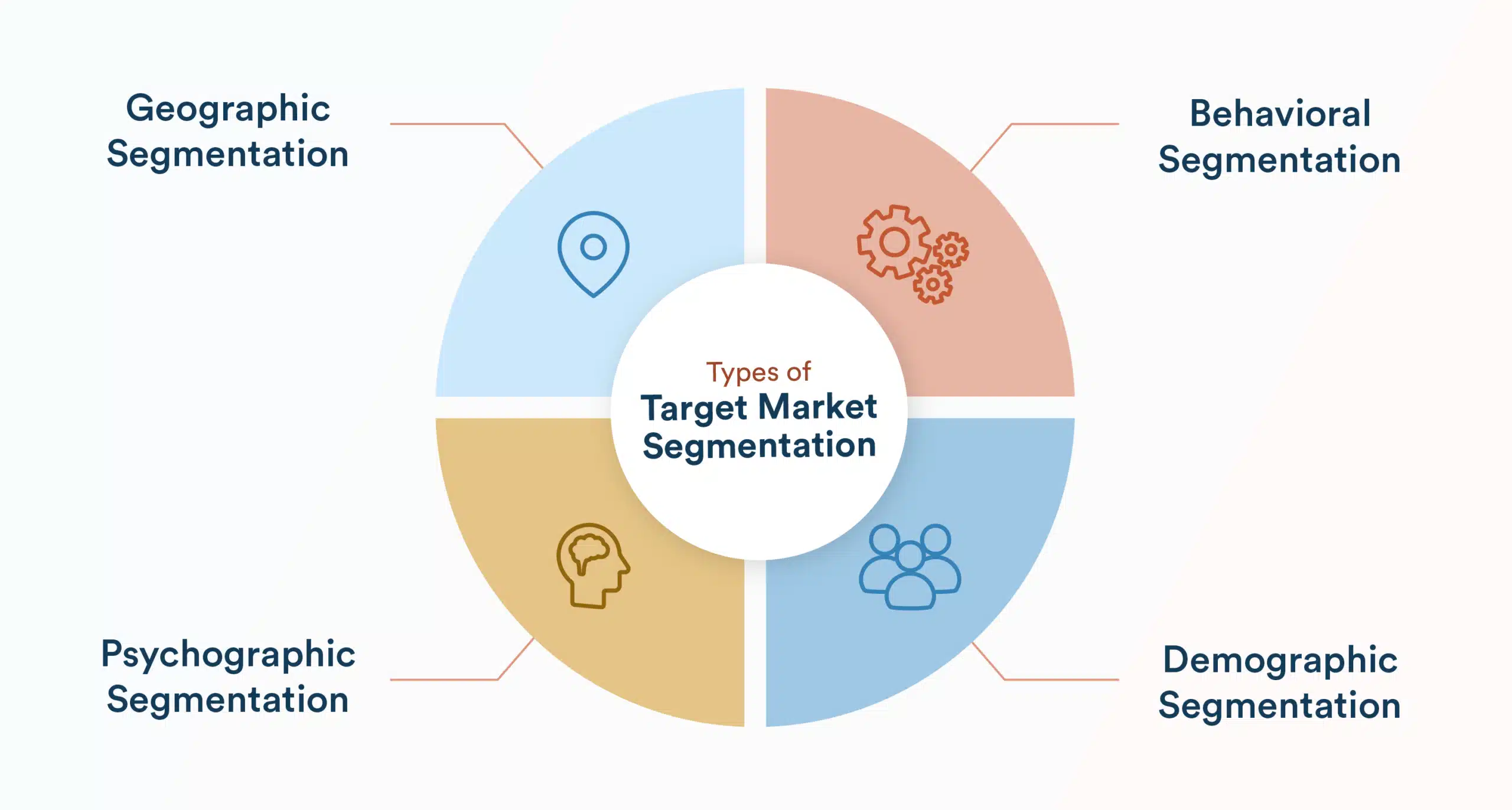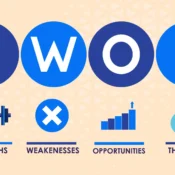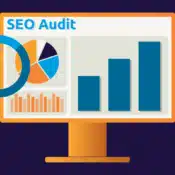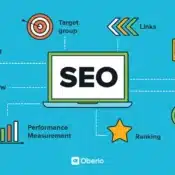Market Segmentation, Niche Targeting & Audience Clusters

September 21, 2025
/
Market Segmentation, Niche Targeting & Audience Clusters
In today’s fast-paced and competitive business environment, understanding your audience is no longer optional—it’s essential. Marketing success depends on reaching the right people with the right message at the right time. Market segmentation, niche targeting, and audience clusters are powerful strategies that help businesses focus their efforts, optimize resources, and achieve measurable results.

What Is Market Segmentation?
Market segmentation is the process of dividing a broad target market into smaller, more manageable groups based on shared characteristics, behaviors, or needs. This approach allows businesses to create tailored marketing campaigns that resonate with each segment, rather than using a generic, one-size-fits-all approach. By identifying and understanding these segments, companies can deliver more personalized messaging, improve customer experience, and increase the likelihood of conversion.Types of Market Segmentation
In modern marketing, businesses rely on different types of market segmentation to reach the right customers with relevant messages. Segmentation breaks down a broad audience into smaller, more specific groups, making it easier to design campaigns that truly connect. The four main types of segmentation—demographic, geographic, psychographic, and behavioral—each provide unique insights into consumer needs and preferences.Demographic Segmentation
Demographic segmentation is the most commonly used type because it relies on clear, measurable data about customers. By dividing the market according to age, gender, income, education, or occupation, businesses can create focused campaigns that address the priorities of each group. This approach works well for consumer goods, retail, and industries where customer profiles are easy to define. Demographic segmentation examples include:- A luxury brand targeting high-income professionals.
- A toy company focusing on parents with young children.
Psychographic Segmentation
While demographics explain who the customer is, psychographic segmentation in marketing reveals why they make certain choices. It digs deeper into lifestyle, values, attitudes, and interests, helping brands connect on an emotional level. Psychographic insights are especially important for businesses looking to build strong brand identity and loyalty. Examples include:- A vegan skincare company targeting eco-conscious millennials.
- A travel brand creating adventure tours for thrill-seekers versus luxury retreats for high-income couples.
Behavioral Segmentation
Behavioral segmentation focuses on how customers interact with products and brands. It considers purchase history, loyalty levels, product usage, and responses to marketing campaigns. By understanding customer behavior in marketing, companies can create tailored offers that increase satisfaction and drive sales. Behavioral segmentation benefits include personalization, improved retention, and stronger conversion rates. Examples:- An e-commerce store giving discounts to first-time buyers.
- A streaming service recommending shows based on viewing habits.
Geographic Segmentation
Geographic segmentation allows brands to shape their marketing strategies based on location. Customer needs often change according to climate, culture, or whether they live in an urban or rural environment. By applying geographic segmentation strategies, businesses can adjust their product offerings, promotions, and distribution to match local demand. Examples of location-based marketing include:- A clothing retailer promoting heavy jackets in Canada and summer wear in Dubai.
- A food delivery app offering specialized deals for big cities versus small towns.
B2B vs. B2C Segmentation
B2B segmentation focuses on dividing businesses into groups based on factors such as industry, company size, decision-making structure, and purchasing behavior. Since B2B purchases are usually rational, data-driven, and involve multiple stakeholders, segmentation often relies on firmographics, needs-based analysis, and account-level insights. For example, a software company may target mid-sized healthcare providers needing compliance tools, or large financial institutions requiring advanced security solutions. B2C segmentation, on the other hand, targets individual consumers and emphasizes emotional drivers, lifestyle choices, and personal preferences. Here, demographic, geographic, psychographic, and behavioral segmentation play a larger role, helping brands connect with personal motivations and day-to-day needs. For instance, a fashion retailer may segment customers by age and style preferences, while a streaming service uses viewing habits to personalize recommendations.
Segmentation in Digital Marketing Channels
Segmentation in digital marketing channels helps businesses deliver the right message to the right audience across different platforms. By tailoring campaigns to specific customer groups, brands can increase engagement, boost conversions, and maximize ROI.Email Marketing
Email marketing segmentation allows businesses to divide subscribers based on demographics, interests, or engagement levels. For example, companies can send personalized product recommendations to repeat buyers or exclusive discounts to inactive subscribers.Social Media Marketing
Social media platforms provide advanced tools to segment audiences by location, interests, and behaviors. A brand can target fitness enthusiasts on Instagram with workout content while running a separate campaign for eco-conscious consumers on Facebook.PPC and Google Ads
In PPC campaigns, segmentation ensures ads reach the most relevant users. Google Ads, for instance, allows targeting by keywords, demographics, geographic areas, and even retargeting past website visitors, which increases the chance of higher-quality leads.Content Marketing
Content segmentation involves creating and distributing tailored blog posts, videos, or guides for different audience groups. A business blog may publish beginner-friendly articles for new customers and advanced case studies for experienced professionals.The Role of Customer Personas in Segmentation
Customer personas play a vital role in segmentation by transforming raw data into relatable, humanized profiles. A persona represents a semi-fictional character that embodies the traits, needs, and challenges of a specific customer segment. Instead of just working with numbers or demographics, marketers use personas to visualize their audience and design strategies that speak directly to customer motivations, pain points, and goals. By integrating personas into market segmentation strategies, businesses can create more targeted messaging and product experiences. For example, a tech company may develop one persona for small business owners seeking affordable solutions and another for enterprise decision-makers demanding scalability. This approach bridges the gap between broad segmentation categories and personalized marketing campaigns, making strategies more effective and customer-focused.Niche Targeting: Focusing on the Right Audience
While market segmentation divides the market into meaningful groups, niche targeting goes a step further by focusing on a very specific subset of the market that is often underserved or highly specialized. Niche targeting allows brands to become highly relevant to a particular audience, positioning themselves as the go-to solution for that group’s unique needs. Examples of niche targeting include:- A fitness brand targeting busy professionals who want 20-minute at-home workouts.
- A luxury skincare company catering exclusively to consumers with sensitive skin.
- A vegan restaurant focusing on environmentally-conscious foodies in urban areas.
Audience Clusters: Using Data to Understand Behavior
Audience clusters take segmentation and targeting further by using advanced analytics to group consumers based on actual behavior, preferences, and interactions. These clusters are often derived from data collected across multiple channels, including social media, website analytics, email campaigns, and CRM systems. Benefits of audience clustering include:- Personalization at Scale: Deliver tailored messages to groups with similar behaviors or interests.
- Optimized Marketing Spend: Focus resources on clusters most likely to convert.
- Improved Customer Experience: Engage audiences with content, products, or services that meet their specific needs.
- High-value repeat buyers
- Price-sensitive first-time shoppers
- Customers who engage primarily with email campaigns
- Social media influencers and advocates
Data Tools for Audience Clustering
Audience clustering tools help businesses analyze large sets of customer data, identify patterns, and group audiences based on behaviors, preferences, and interactions. These tools make it easier to move beyond basic segmentation and create dynamic clusters that evolve as customer behavior changes. Popular tools include Google Analytics, which provides insights into website traffic and user behavior, and CRM platforms like HubSpot or Salesforce that organize customer interactions across multiple channels. Advanced solutions such as Mixpanel or Tableau use predictive analytics and visualization to uncover hidden patterns, while AI-powered platforms apply machine learning to automatically update audience clusters. By leveraging these tools, marketers can deliver highly personalized campaigns, optimize spending, and scale customer engagement strategies effectively.How to Use Data Tools for Audience Clustering
Using data tools for audience clustering allows marketers to transform raw customer information into actionable insights. The process starts with collecting data, then analyzing it, and finally applying it to create meaningful clusters that guide marketing strategies. Here’s how businesses can make the most of these tools:1. Data Collection and Integration
The first step is to gather customer data from multiple sources—websites, mobile apps, social media, email campaigns, and CRM systems. Tools like Google Analytics provide valuable metrics about user behavior, while CRMs such as HubSpot or Salesforce capture detailed customer interactions. Integrating these data points ensures you get a 360-degree view of your audience.2. Analyzing and Segmenting Customers
Once the data is collected, platforms like Mixpanel or Tableau help visualize patterns and behaviors. For example, you might discover clusters such as frequent buyers, first-time visitors, or cart abandoners. Using machine learning features within advanced tools, clusters can be updated automatically as customer behavior evolves, ensuring your segmentation remains accurate over time.3. Creating Actionable Audience Clusters
After identifying clusters, businesses can design personalized strategies for each group. For instance, loyal customers may receive exclusive rewards, while price-sensitive clusters could be targeted with promotional discounts. Social media tools like Meta Ads Manager or LinkedIn Campaign Manager also allow direct activation of these clusters in paid campaigns.4. Measuring and Optimizing Results
Finally, marketers need to track the performance of campaigns designed for each cluster. Monitoring KPIs such as engagement rate, conversion rate, and customer lifetime value helps refine strategies. Most clustering tools include built-in dashboards, making it easier to compare results across different segments and optimize campaigns continuously. By following these steps, companies can use audience clustering tools not just to organize customer data but to drive smarter decisions, enhance personalization, and improve overall marketing ROI.How to Conduct Market Segmentation and Targeting
Implementing effective segmentation, niche targeting, and audience clustering requires a structured approach. By following these six steps, businesses can design personalized marketing strategies that deliver measurable results.Step 1: Define Your Market Goals
Before dividing your audience, you must be clear about your objectives. Do you want to build brand awareness, generate qualified leads, increase sales growth, or strengthen customer retention? The goal you set will influence how you approach segmentation. Example:- A new tech startup may focus on awareness by reaching as many potential users as possible.
- A mature e-commerce brand may prioritize retention by segmenting loyal customers for exclusive rewards.
Step 2: Conduct Market Research
Gather data from multiple sources to better understand your audience. This can include surveys, focus groups, social media analytics, CRM data, or customer feedback. The research should cover demographics, behaviors, and preferences while also analyzing competitor strategies. Example:- A fashion retailer surveys customers to learn about shopping frequency and preferred styles.
- A SaaS company analyzes competitor pricing and customer reviews to identify gaps in the market.
Step 3: Identify Segments and Clusters
Use the collected data to create distinct segments (e.g., demographic or psychographic groups) and behavioral clusters (based on purchase history or engagement). Each group should reflect unique needs and patterns that can be addressed differently. Example:- An online grocery store identifies segments such as busy professionals, health-conscious families, and budget shoppers.
- Clusters may include frequent buyers, discount hunters, or app-only users.
Step 4: Choose Your Niche
Not every segment is worth pursuing. Focus on the segment or cluster where your brand can deliver the most value and gain a competitive edge. This helps avoid wasted resources and ensures stronger positioning. Example:- A fitness app chooses to focus on urban millennials who prefer quick, at-home workouts rather than competing broadly with all fitness audiences.
Step 5: Develop Targeted Strategies
Craft personalized campaigns for each chosen segment or cluster. This includes selecting the right marketing channels, designing tailored messaging, and creating relevant content or offers. Example:- An e-commerce store sends loyalty discounts via email to repeat buyers while targeting new customers with social media ads.
- A travel agency creates different content: budget-friendly trip guides for students and luxury experiences for high-income travelers.
Step 6: Implement, Measure, and Optimize
Launch campaigns and closely track performance using KPIs like conversion rate, click-through rate, engagement, customer lifetime value, and ROI. Based on results, refine your strategies and update your audience clusters regularly. Example:- A B2B software company runs LinkedIn campaigns targeting mid-sized companies. By measuring cost-per-lead and lead quality, they adjust their messaging to improve conversions.
- An online subscription service notices higher engagement from email clusters and shifts more budget into that channel.
Customer Journey Mapping & Segmentation
Customer journey mapping and segmentation work hand in hand to create a clear picture of how customers interact with a brand. A journey map outlines the different stages a customer goes through—from awareness and consideration to purchase and post-purchase engagement. By overlaying segmentation onto this journey, businesses can identify how different audience groups behave at each stage, highlighting unique pain points, motivations, and touchpoints for every segment. Segmentation within the customer journey allows for more personalized and effective strategies. For example, a first-time visitor may need educational content during the awareness stage, while a loyal customer might respond better to exclusive rewards during the retention stage. By combining journey mapping with audience clusters, brands can deliver the right message at the right time, improving both customer experience and overall conversion rates.Best Practices for Effective Segmentation and Targeting
- Data-Driven Decisions: Base segmentation on real consumer behavior and analytics.
- Stay Flexible: Continuously update segments as markets and preferences evolve.
- Focus on High-Value Clusters: Prioritize groups most likely to drive growth.
- Personalize Messaging: Tailor content, offers, and campaigns for maximum relevance.
- Test and Refine: Use A/B testing and performance tracking to improve targeting efficiency.
Case Study: Boosting Conversions Through Audience Clusters
A mid-sized online retailer in the UK sought to improve conversion rates and optimize its marketing spend. Instead of relying on generic campaigns, the company turned to audience clustering powered by customer data. Using the RFM model (Recency, Frequency, Monetary), they analyzed purchasing patterns and applied clustering algorithms such as K-Means, Gaussian Mixture Models (GMM), and DBSCAN. Among these, GMM proved to be the most effective, achieving a high-quality clustering score (Silhouette ≈ 0.80) according to a study published on arXiv. Through this analysis, the retailer identified distinct clusters:- High-value loyal customers who purchase frequently and spend significantly.
- Budget-conscious buyers who make frequent low-value purchases.
- Dormant customers who had not purchased in a long time.
- Category-specific buyers who shop only within narrow product ranges.
- Conversion rates improved across all customer groups.
- Repeat purchase frequency grew substantially, especially among loyal customers.
- Marketing spend became more efficient, as budgets were allocated to the clusters most likely to convert.
- Overall sales revenue increased, validating the power of data-driven clustering in modern retail marketing.
Frequently Asked Questions (FAQ)
- What’s the difference between market segmentation and niche targeting? Segmentation divides a broad market into smaller groups, while niche targeting focuses on a highly specific, often underserved subset of the market.
- Can small businesses benefit from audience clusters? Yes. Even small companies can use customer behavior data to create clusters, optimize campaigns, and maximize ROI.
- How often should segments and clusters be reviewed? Regularly—ideally quarterly—to ensure they reflect current market trends and customer behaviour.
- What KPIs should I track for effective targeting? Conversion rates, sales revenue, engagement metrics, customer acquisition and retention, and ROI.
Conclusion
Market segmentation, niche targeting, and audience clusters are essential tools for modern marketing. By understanding your audience, focusing on specific needs, and leveraging behavioral data, businesses can deliver more relevant campaigns, improve customer experience, and drive sustainable growth. When executed strategically, these approaches transform marketing from a generic effort into a powerful engine for measurable business success.Ready to turn insights into measurable growth?
At Above Quality, we specialize in transforming raw customer data into powerful marketing strategies through advanced segmentation, niche targeting, and audience clustering. Whether you’re looking to boost conversions, optimize ad spend, or build stronger customer loyalty, our team is here to help you achieve real results.Recent Posts
ahmed/0 Comments
SWOT Analysis for Marketing
ahmed/0 Comments
SEO Audit: The Ultimate Guide to Perfecting Your Website Performance
ahmed/0 Comments




